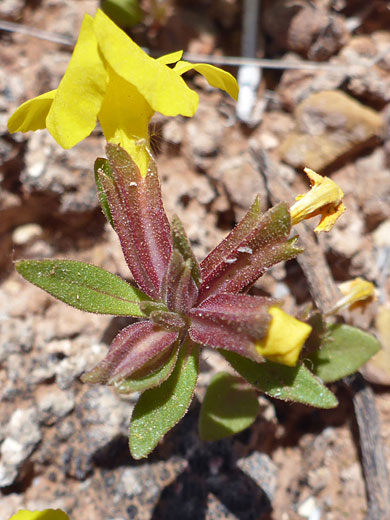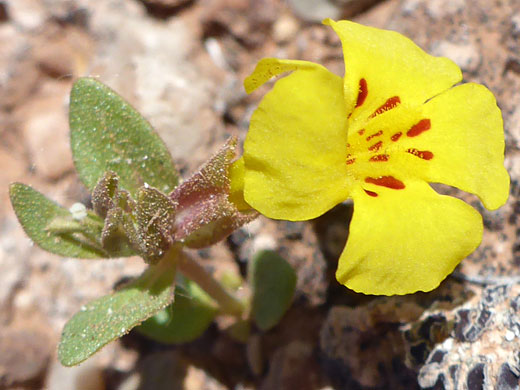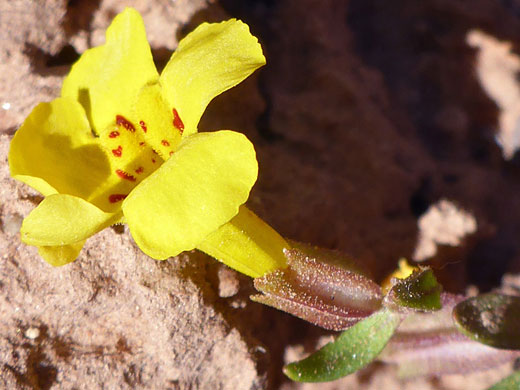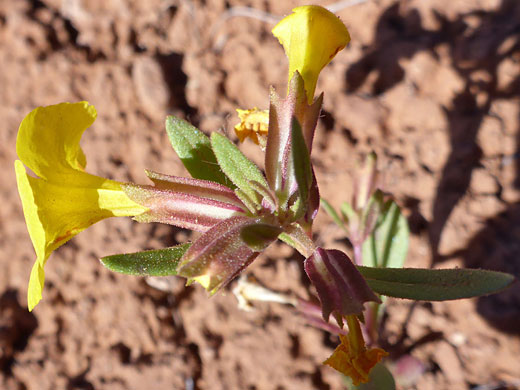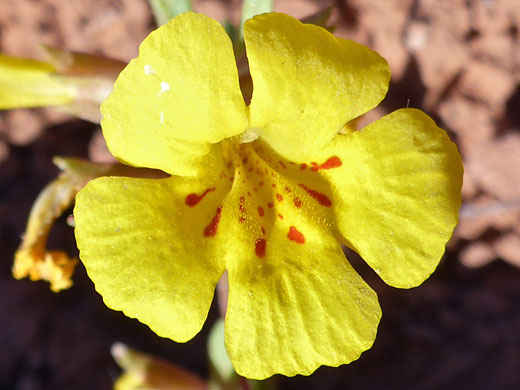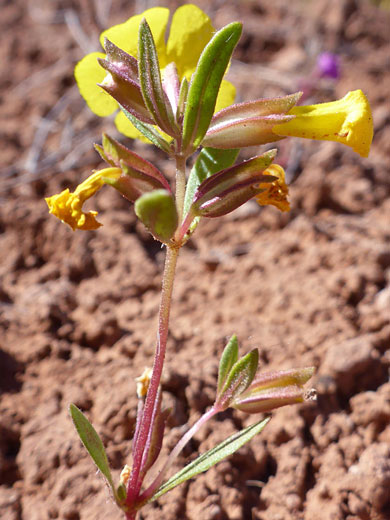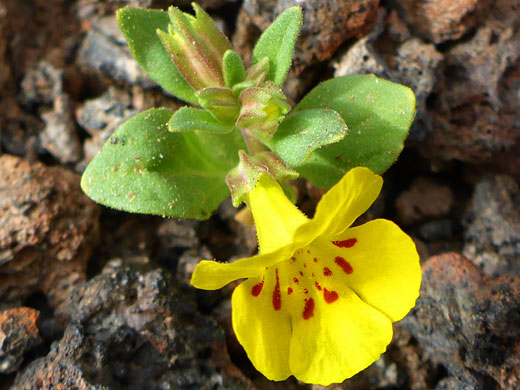Common names:
Annual redspot monkeyflower, Parry's monkeyflower
Family:
Scientific name:
Mimulus parryi
Main flower color:
Range:
South Nevada, northwest Arizona, far southwest Utah and a small part of east California
Height:
Up to 7 inches
Habitat:
Washes and sandy slopes, in desert areas, from 2,500 to 6,000 feet
Leaves:
Oblanceolate to linear, up to 1 inch long
Season:
April to June
Mimulus parryi has the unusual quality of producing flowers of two contrasting colors; either pink or yellow, often differing for adjacent plants. Pink flowers have a yellow center, flecked with pink spots, while for yellow flowers the center is marked with slightly larger, pinkish-red patches. Yellow flowers are more common. The corolla tube is up to 0.7 inches in length, supported by a reddish calyx about two thirds as long. One of the five calyx lobes is slightly longer than the other four, with a more rounded tip. Flowers are attached by short pedicels, less than 0.2 inches. The corolla is distinctly bilabiate rather than fully radially symmetric.
The calyces, the stems and the leaves have a light to dense covering of very short, fine hairs (puberulent). Leaf tips are rounded to pointed.
The calyces, the stems and the leaves have a light to dense covering of very short, fine hairs (puberulent). Leaf tips are rounded to pointed.
All Contents © Copyright The American Southwest | Comments and Questions | Contribute | Site Map


